---------------------------------------------------------
I admit I have a huge weakness for all things fluffy. The fluffier the better! So I might be a little impartial when I say that Angora rabbits are hands down the cutest rabbits around! How can you not love this fluffy little face?!
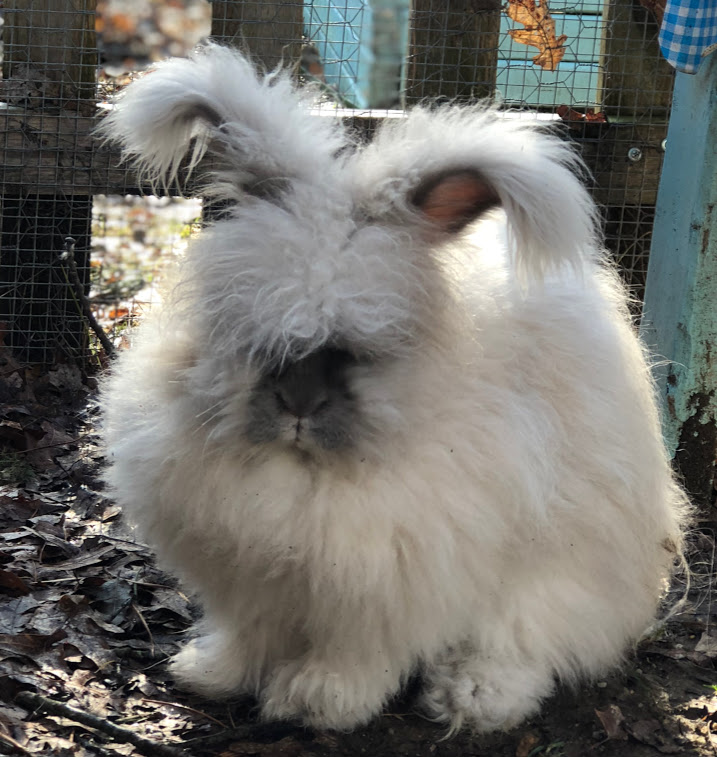
But all that fluff comes at a price. Angora rabbits are not for everyone. They require a bigger time investment than a short-haired rabbit. Below are some things you should consider before you add an Angora to your family.
You should be comfortable handling animals
You are going to be spending a fair amount of time handling your rabbits for grooming. You will need to be able to move & hold the rabbit in various positions to groom all areas of her body. She will likely protest when you try to groom her belly, feet, & face. She will not sit still while you hold her paws to trim her nails. This will require you to cradle her safely so she doesn’t hurt herself while trying to escape.
Rabbits have very strong legs that can injure you as they kick away. They are strong enough that they can actually break their own back if picked up/handled incorrectly and they try to kick out. When handling your rabbit always have her firmly in control so that she doesn’t hurt herself or you.
Animal grooming experience is a plus
An angora rabbit is not a good animal for a first-time animal owner. They are definitely not for a child under 10 (unless there is a grown-up willing to do the grooming). Angoras were the first rabbits I have ever owned. I have had dogs, cats, and various other fluffy animals my whole life and felt confident with my grooming skills going into rabbit keeping. I have been grooming & clipping the nails on my pets since I was about 10 years old. Even so, the level of grooming surprised me.
The texture & density of their fur makes brushing more challenging than any long-haired cat or dog I’ve ever had. Long haired cats have a silky texture making matting less frequent. English Angoras have a denser texture and mats form easily.
You should plan on devoting about 20-30 minutes a week per rabbit for grooming. If you aren’t comfortable handling animals then you should line up a good, rabbit-friendly groomer before you bring your bunny home.
Start when the bunnies are very young, and begin short 5-minute grooming sessions at least a few times per week. This will ease them into the grooming schedule. Young rabbits do not shed fur at nearly the same rate as adults. Starting good grooming habits and handling them when they are young get both you and the rabbit used to a lifetime of grooming. Click here to read about grooming angoras
There will be fur on everything
This is especially true if your rabbit lives indoors. It doesn’t really matter how often you brush them. It seems like there is always loose fur on the rabbit. It will be on your furniture and all over your clothes. If you spend any time snuggling with your rabbit, you will be absolutely covered in no time. My rabbit’s favorite place to snuggle is to get up on my chest and sort of wrap around the front of my neck. It’s adorable and I love snuggling them. After they hop down my clothes are covered with fur and there is a fine layer of angora all over my face and in my nose and mouth and hair. It’s a good thing I don’t have animal allergies! Owning an angora means you will be well acquainted with your vacuum and lint roller.

All that wool piles up fast
You should make a plan for all the wool that you collect when grooming your bunnies. Maybe you aren’t interested in doing anything with it, you just want the rabbits as cute pets. That is fine, but it would be such a waste to throw it away! Angora wool is highly prized by spinners and can be quite expensive to purchase. If you don’t plan on using it yourself and you don’t want to get into selling it, I am sure you can find some local spinners who would be delighted with the donation! Try asking at your local yarn store for suggestions. If you aren’t going to spin it yourself, you can also sell raw Angora wool on sites like Etsy for $5-$10+ per ounce.
If you know how to spin, you can turn the wool into yarn and sell it for a lot more. Angora wool is also great for felting, and all sorts of accessories can be made from felted angora wool. When I got my bunnies I thought for sure I would spin the wool into all sorts of wonderful knitted garments. I bought a second-hand spinning wheel and took a class on how to spin…..and that is about as far as I have gotten! It’s a lot harder than it looks and I just haven’t had the time to devote to learning it.
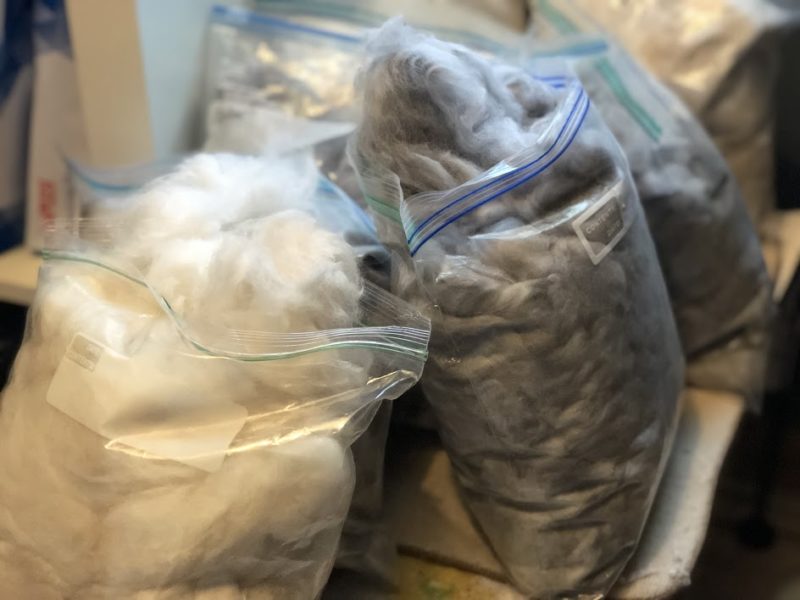
They poop. A lot
The average rabbit can drop up to 500 poop pellets a day! Despite all of that pooping, they are actually very clean animals. They like to keep their living areas clean and can be taught to use a litter box (click here to learn about litter box training rabbits). I highly recommend litter box training your rabbit, for both indoor & outdoor rabbits. In any event, be prepared to clean up after them daily to stay ahead of it. A well-trained rabbit can go hours without using their box, so once they are trained you can let them hang out with you without fear of a trail of tiny poops everywhere.
They are independent animals
With all this time you spend caring for them, you might think they feel dependent on humans and grateful for your presence. Every rabbit has its own personality, but in general, they are not people pleasers like dogs. They don’t live to make us happy. They are much more like cats. They enjoy our presence, they enjoy the food we give them, they enjoy feeling like they rule the roost, but they like their space. They will come to sit with you when they feel like it and will let you know their displeasure if you try to force it. Bonding with your rabbit is all about going slow, having patience, and letting them take the lead. Click here to read tips on playing with your rabbit
That wiggly nose will wiggle its way into your heart
Don’t let me scare you away from adding a sweet angora or two to your life! There is nothing better than relaxing on a chilly winter day with a huge bundle of fluff on your lap. Rabbits are so peaceful and quiet, something about being around them quiets my brain and brings a sense of calm to my crazy day. On busy days, I like to go outside and just sit in the grass in the rabbit yard and simply be with the bunnies. Did you know that rabbits “purr” like cats when content? It’s not a purr noise like a cat’s, the sound comes from them gently clicking their teeth together. Just like a cat’s purr is soothing to humans, a rabbit’s clicking has the same effect.
And don’t even get me started on that cute little wiggly nose – how could you not fall in love?!
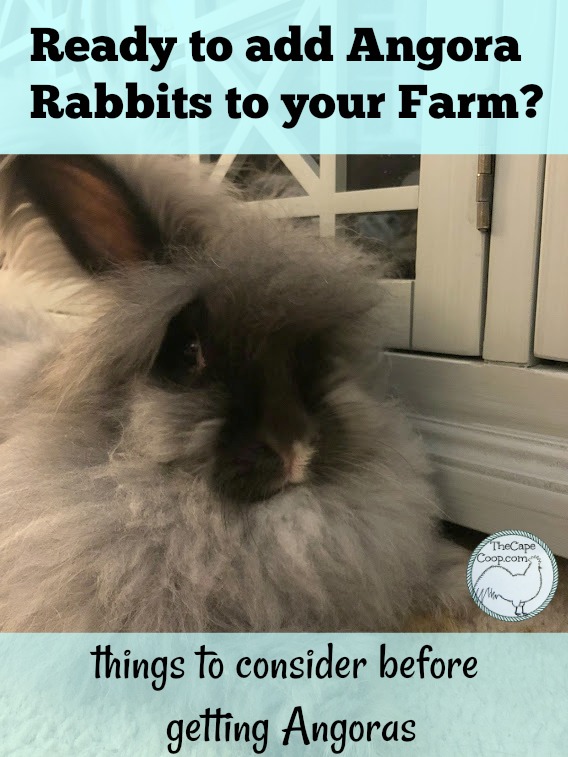
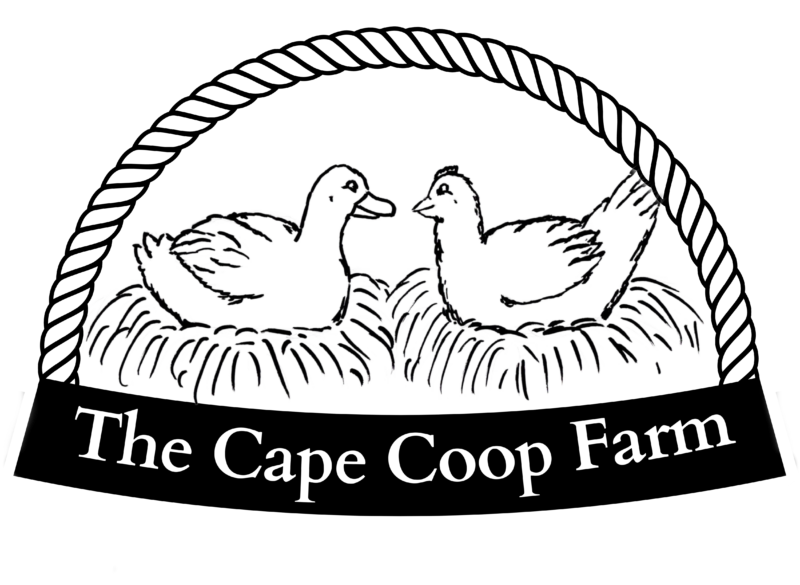
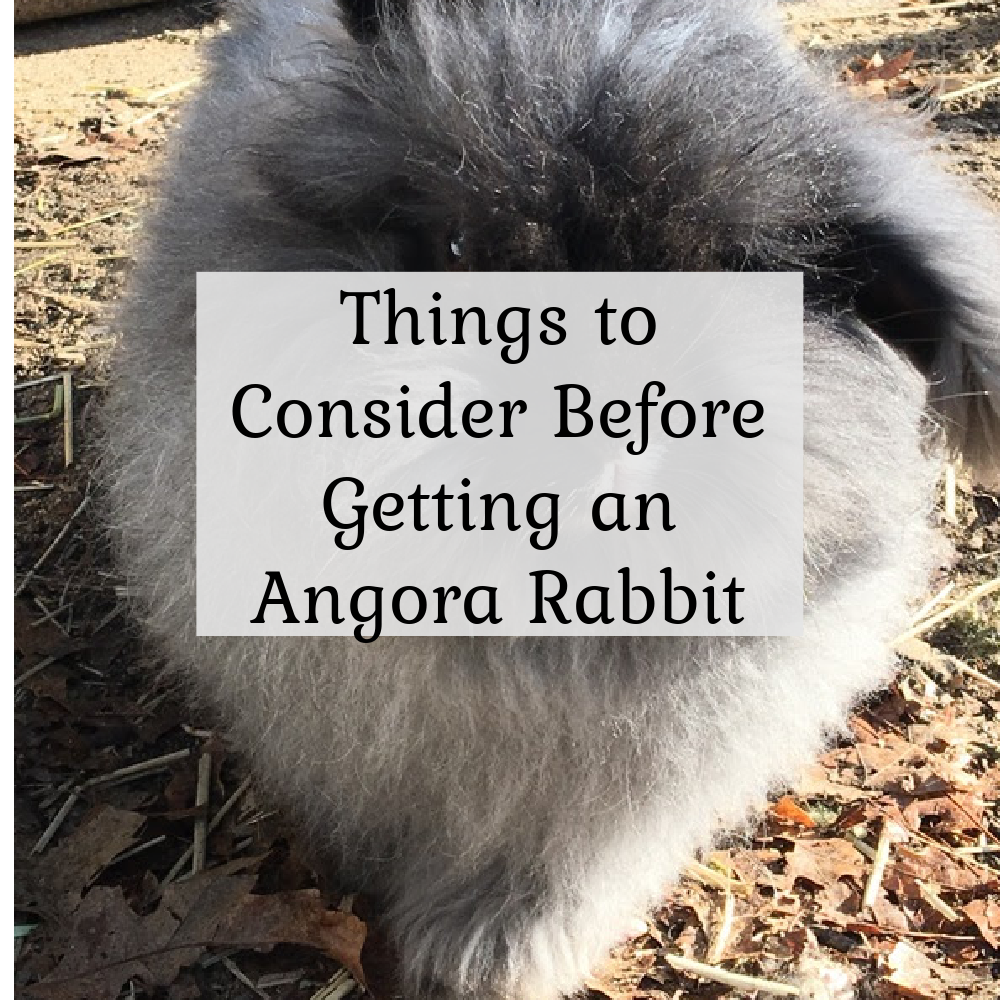


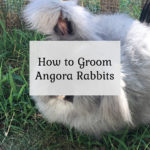

Harmony
Friday 16th of February 2024
As someone who is just starting out with angora rabbits, would you recommend one or two, boys or girls? I plan to spin the fur.
Liz
Friday 16th of February 2024
I would recommend that you start out with two females. The best option would be to get them when they are 2-6 months old so they can bond with each other and so you can get them used to grooming from an early age. This will give the rabbits a companion but not be an unmanagable amount of rabbits for someone starting out. You can add more rabbits as your time and experience grow. Don't get a male unless you are thinking you want to breed them, the presence of a male rabbit tends to make everyone more territorial. Good luck!
Soraya
Wednesday 5th of October 2022
Thank you for this information! It is very usefull!
Jas
Monday 11th of January 2021
Hi, is angora bunny good pt for kids?
Liz
Monday 11th of January 2021
Rabbits in general are not great pets for small children. They don't particularly like being picked up (they like to be pet, but to keep their feet on the ground). Rabbits can be spooked by lots of loud noises, and they can be seriously injured by rough handling because of their fragile spines. If your children are older (over 10), rabbits can be good pets, but it is unlikely that they will be able to handle the grooming requirements of an Angora. Angoras need grooming at least twice a month (but weekly is better). They can actually die of a condition called wool block if they aren't groomed regularly and they end up ingesting too much of their fur. Mats can also form quickly, which are uncomfortable for them. The grooming needs to include gently working out and removing mats, and their fur is quite thick. Brushing their underside and trimming their nails requires gentle but firm handling as you turn them on their back while supporting their spine. So I would say IF your kids are over 10 they can be good pets. The kids can be in charge of cleaning the cage, feeding, watering (if they are responsible enough), but it is likely you or another adult will need to be in charge of the grooming.
Troyalwood
Friday 25th of December 2020
Meat rabbits are also something I'm interested in. I would love to feed my dogs a raw food diet and I also would enjoy a meal of rabbit.
Troyalwood
Friday 25th of December 2020
I'm interested in raising angora rabbits,I'm hoping to get them in February can any one help me out? I'm a cat and dog groomer for the last 25 years I love hair and animals
Liz
Monday 28th of December 2020
Being a groomer will certainly come in handy with owning angoras! I would suggest you check out my general rabbit page, there are lots of helpful articles on caring for angoras https://thecapecoop.com/backyard-rabbits/ If you are interested in raising them as dual purpose (fiber & food), I would suggest you focus on some of the larger angora breeds like Germans or Giants. You can read more about the different angora breeds here: https://thecapecoop.com/what-breed-angora-rabbit-is-right-for-you/